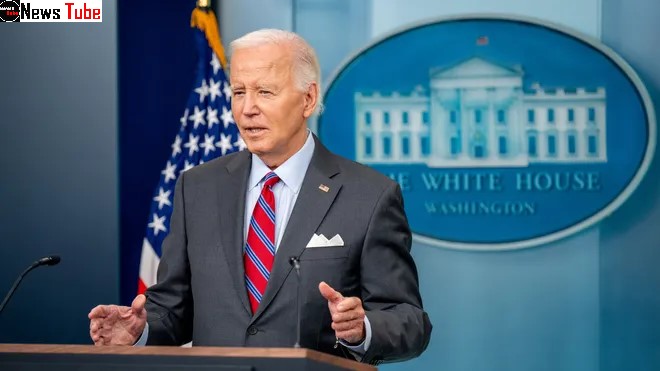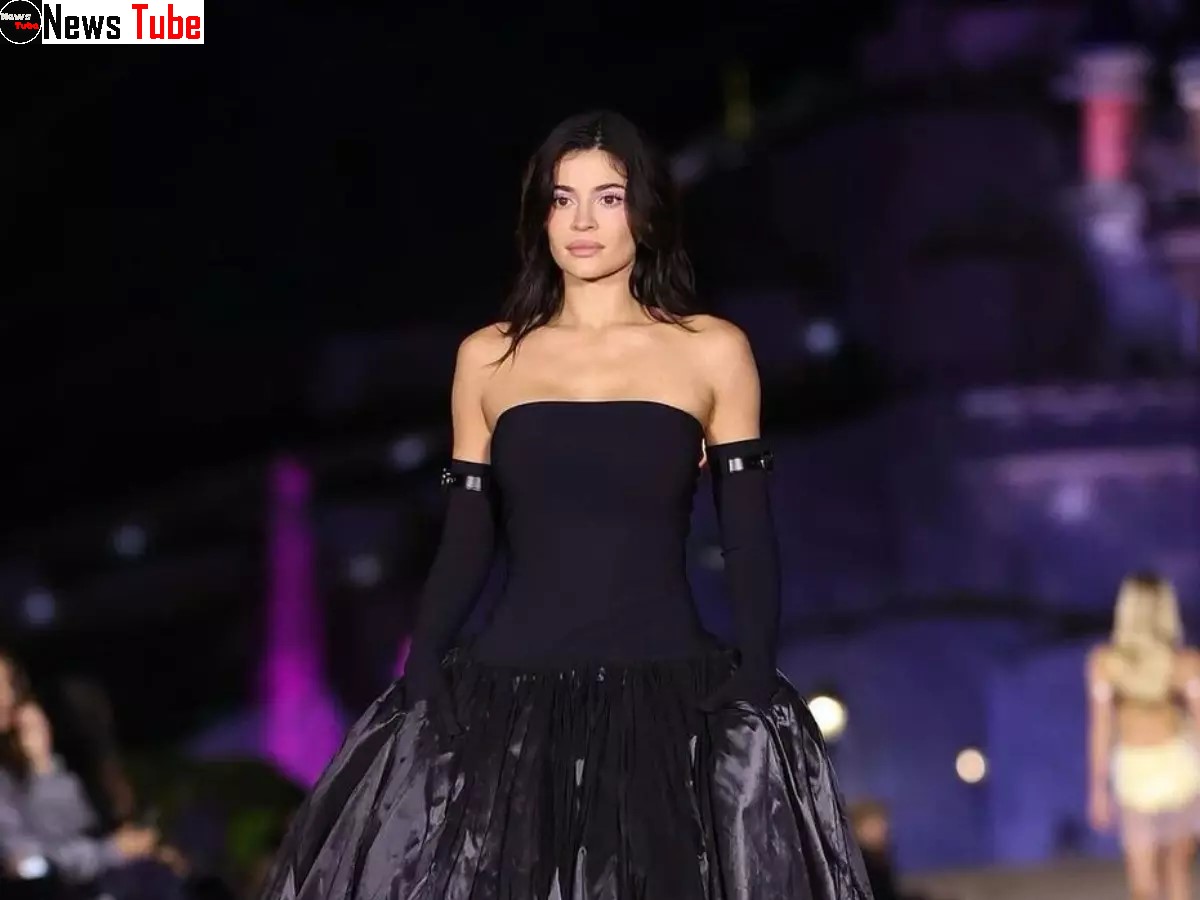
A boxing match lasting only 46 seconds has ignited a fiery debate about the future of women’s sports at the Paris Olympics! The controversy exploded when Algerian boxer Imane Khelif delivered a devastating blow to Italy’s Angela Carini, forcing a swift and shocking withdrawal. The aftermath has been a media frenzy, with sports commentators, celebrities, and the public all weighing in on the hot-button issue: who should be allowed to compete in women’s sports?
In an unexpected turn of events, Carini withdrew from the match, citing unbearable pain after being struck by Khelif. “I felt a severe pain in my nose, and with the maturity of a boxer, I said, ‘Enough,’ because I didn’t want to, I couldn’t finish the match,” Carini explained. But the Italian boxer was quick to clarify her stance, denying any political motivation behind her decision. “I am not here to judge or pass judgment,” Carini said. “It’s not up to me to decide what’s right or wrong.”
However, the internet had no such reservations. As soon as the match ended, the digital world erupted. Critics took to social media, questioning Khelif’s participation and labeling her as a “biological male” and, in some instances, a “man.” The controversy quickly escalated, dragging in fans and detractors alike.
The backstory? Khelif and Taiwanese boxer Lin Yu-ting were disqualified from the International Boxing Association (IBA) World Championships in 2023 due to failing gender verification tests. The IBA stated that the disqualification wasn’t related to a “testosterone examination,” leaving everyone puzzled about the nature of these “separate and recognized tests.” The IBA has yet to provide further details, leaving the public in suspense and fueling speculation.
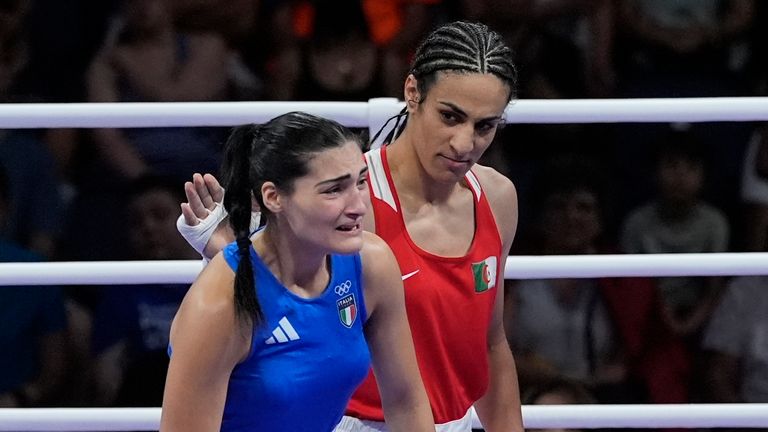
But the plot thickens! The International Olympic Committee (IOC), which took control of Olympic boxing after severing ties with the IBA due to governance and corruption issues, has declared both Khelif and Lin eligible for the Paris Olympics. The IOC slammed the IBA’s decision as “sudden and arbitrary,” emphasizing that both athletes were victims of an unfair process. The IOC’s stance has only added fuel to the fire, with the debate reaching new heights as both Khelif and Lin remain silent on the matter.
Imane Khelif, a seasoned boxer with a career record of 37-9, has a history of competing in women’s boxing without any prior incidents. She even reached the quarterfinals in the delayed 2020 Tokyo Olympics and clinched a silver medal at the 2022 IBA World Championships. Her sudden disqualification at the 2023 championships, just before a gold medal match, left many bewildered. Khelif’s career has been one of triumph and challenges, and her recent victory over Carini only adds another chapter to her complex story.
Meanwhile, Lin Yu-ting, a formidable competitor with a 41-14 career record and multiple world championship medals, advanced to the quarterfinals after defeating Uzbekistan’s Sitora Turdibekova. Like Khelif, Lin has faced controversy regarding her eligibility but has remained focused on her boxing career.
This controversy isn’t happening in a vacuum. The debate over who should compete in women’s sports has been a contentious issue for decades. The topic encompasses a wide range of concerns, from sex verification testing and doping to policies for intersex and transgender athletes. The current focus on testosterone levels and their potential advantages has intensified the discussion. Testosterone, a hormone typically higher in those assigned male at birth, is thought to offer benefits like increased speed and muscle mass. This has made it a focal point in the ongoing quest for fairness in women’s sports.
Differences in sex development (DSD) or intersex traits complicate the issue further. These conditions can result in atypical hormone levels, including higher testosterone. Policymakers have been grappling with how to address these athletes, often lumping them together under the term “46 XY DSD.” This group includes individuals who may have XY chromosomes but are insensitive to androgens, such as testosterone, and thus do not exhibit typical male characteristics. The line between transgender and intersex athletes can sometimes blur, adding another layer of complexity to the debate.
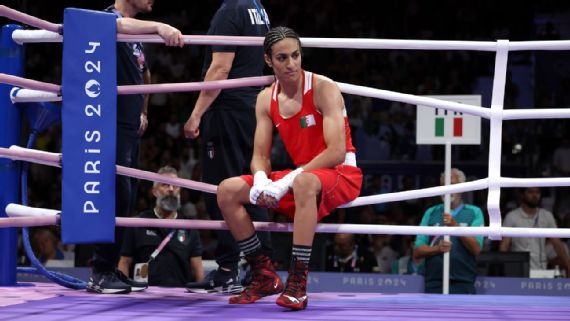
Interestingly, there’s no clear evidence that either Khelif or Lin falls into the categories of transgender or intersex athletes. This lack of clarity has left many questioning the criteria used to determine their eligibility. The IOC has been adamant that this is not a case of “a man fighting a woman,” as some have sensationally claimed. The organization has called for a more nuanced understanding of the situation, but the controversy shows no signs of abating.
The situation brings to mind the long and tumultuous history of sex verification in women’s sports. From early visual inspections to modern chromosome and hormone tests, the effort to regulate who can compete in women’s categories has been fraught with ethical and scientific challenges. The case of South African runner Caster Semenya is a stark reminder of the complexities involved. Semenya’s battle with World Athletics over her eligibility, following her 2009 World Championships victory, has been a highly publicized and controversial saga. The policies requiring her to lower her testosterone levels to compete have sparked outrage and sympathy, drawing attention to the often arbitrary nature of such regulations.
Semenya’s experience highlights a broader issue: the difficulty of establishing fair and consistent rules in women’s sports. World Athletics’ use of a study linking higher testosterone levels to performance advantages was later criticized for lacking solid evidence. The British Journal of Sports Medicine even issued a correction, stating that the study did not conclusively prove a causal relationship. This has raised questions about the validity of the criteria used to exclude athletes like Semenya, and by extension, the fairness of similar policies in other sports.
The IOC’s decision to allow each international sports federation to set its own eligibility requirements has resulted in a patchwork of policies. Some, like United World Wrestling, have vague guidelines, while others, like World Athletics, have specific rules for both transgender and intersex athletes. The inconsistency has led to confusion and controversy, as seen in the Khelif and Lin cases. This decentralized approach means that policies can vary significantly depending on the sport, country, or even individual event.
As the controversy unfolds, the future of women’s boxing hangs in the balance. Khelif is set to compete in the quarterfinals against Hungary’s Anna Luca Hamori, while Lin will face Bulgaria’s Svetlana Kamenova Staneva. The Hungarian Boxing Association has already announced plans to protest Khelif’s participation, adding another layer of tension to the upcoming matches. Despite the swirling controversy, USA Boxing has expressed confidence in the IOC’s eligibility criteria, emphasizing that all competitors have qualified under established rules.
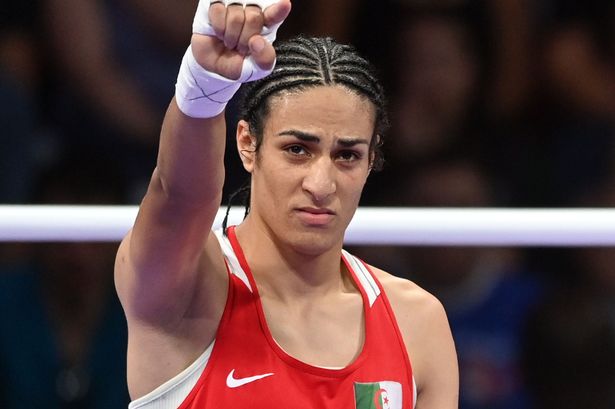
Angela Carini, who initially didn’t shake Khelif’s hand after the match, has expressed regret over the situation. “All this controversy makes me sad,” Carini said, adding that she respects the IOC’s decision. This sentiment reflects a broader unease within the sports community, as athletes and officials alike grapple with the implications of this ongoing debate.
The Khelif-Carini match and the broader controversy surrounding Khelif and Lin have thrust the issue of eligibility in women’s sports into the global spotlight. As the athletes prepare for their next bouts, the world will be watching closely, eager to see how this high-stakes drama unfolds. The outcome of these matches could have far-reaching implications, not just for the athletes involved, but for the future of women’s sports as a whole.
The debate over who should compete in women’s sports is far from settled. As policies continue to evolve and new cases emerge, the sports community will need to confront challenging questions about fairness, inclusivity, and the very definition of gender in athletics. The Khelif and Lin controversy serves as a reminder that these issues are not just about rules and regulations—they are about real people, their lives, and their dreams.
As we wait to see what happens next, one thing is clear: the world of women’s sports is at a crossroads. The decisions made in the coming days, weeks, and months will shape the future of athletic competition and the lives of countless athletes. Whether this moment leads to greater understanding and inclusivity or further division and controversy remains to be seen. But one thing is certain: the conversation is far from over. Stay tuned as the story continues to unfold!




